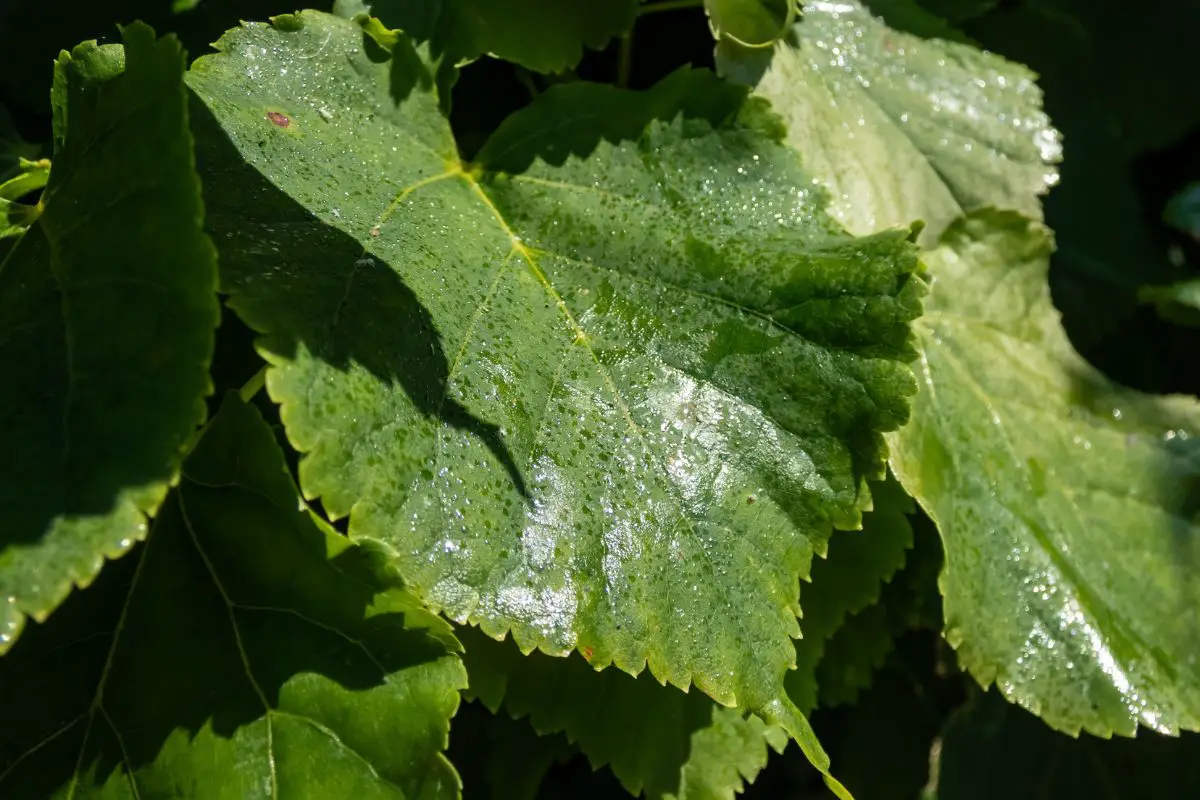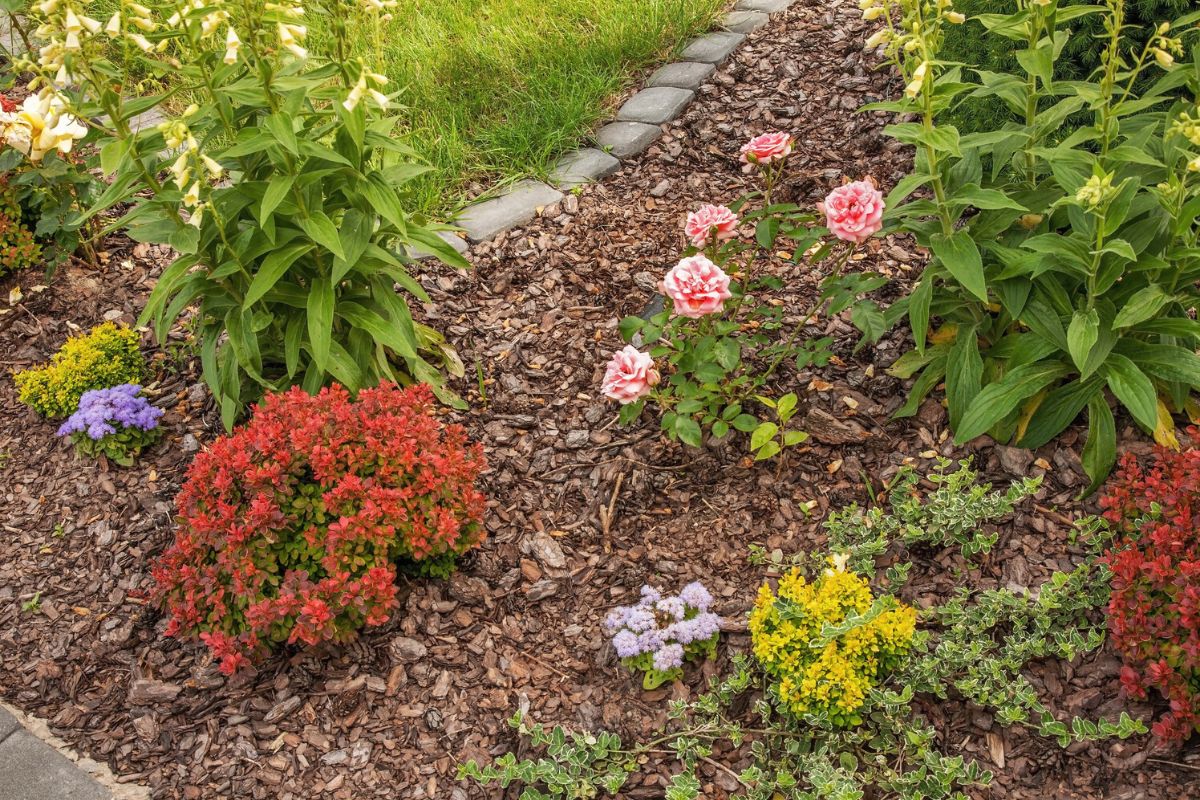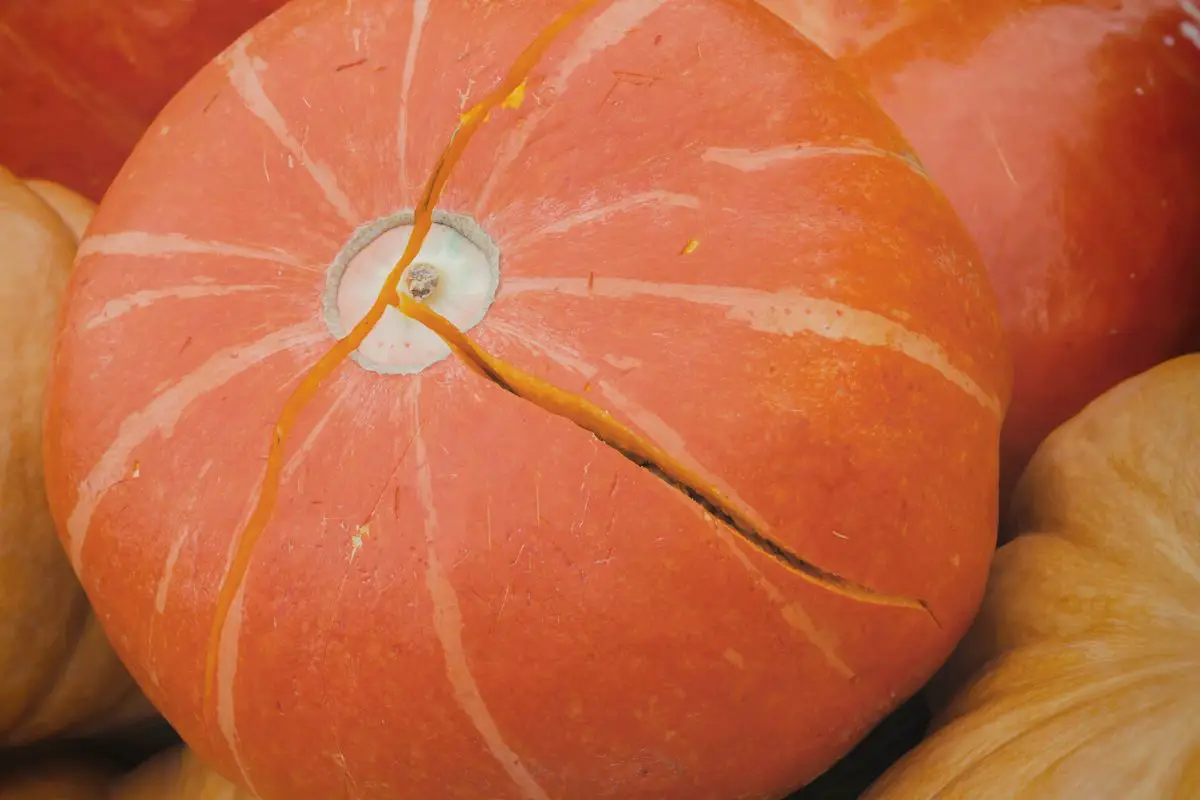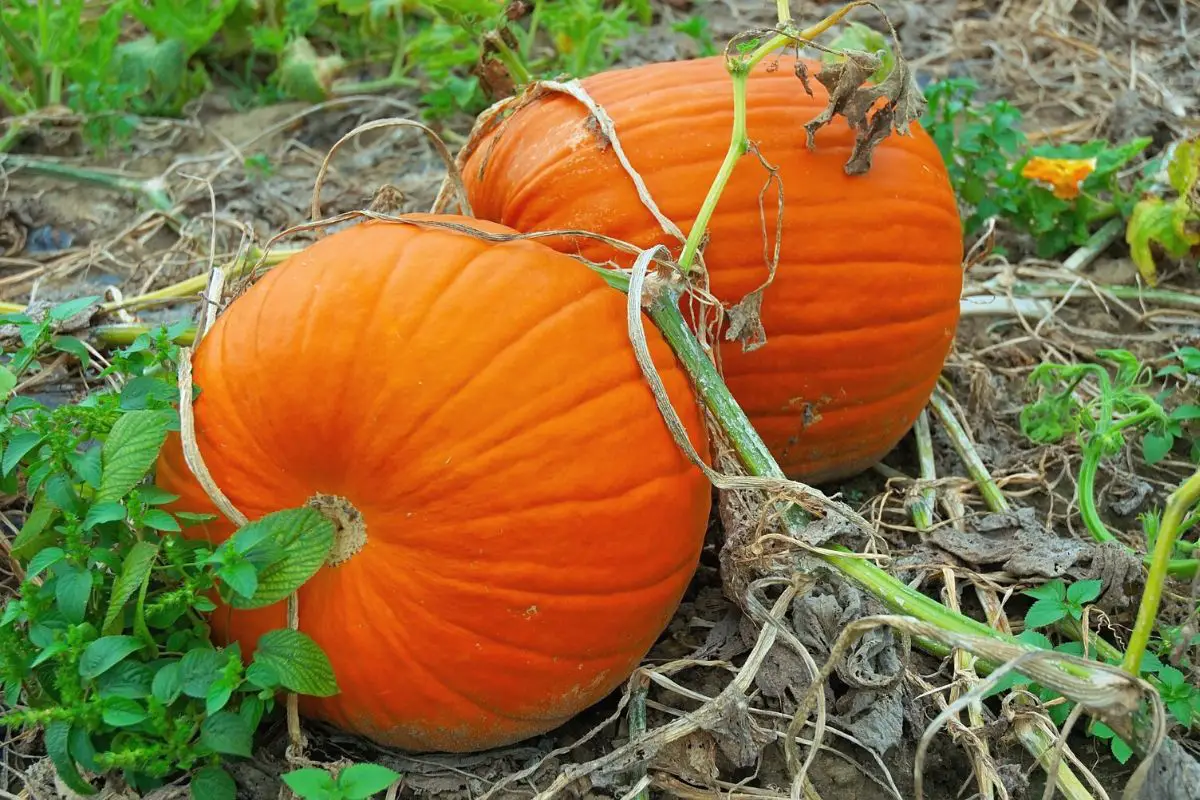Pumpkins are popular autumn fruits because they can be used to make Halloween decorations or well-loved fall recipes. If you somehow end up with sticky pumpkins, they’re likely unsuitable for carving or consumption. But it’s important to find out the cause to prevent it from recurring in your next year’s harvest.
The common reasons your pumpkins become sticky include:
- Overmaturity
- Insect pests
- Disease or mold
- Calcium deficiency
- High humidity
- Sunburn
- Temperature fluctuations
- Excess moisture from rain or watering practices
This article will explore these reasons in more detail and provide practical solutions to salvage your crop. I’ll also share some tips on using sticky pumpkins so they don’t go to waste and how to prevent this issue in the future. Read on to learn more!

Common Reasons for Sticky Pumpkins
Stickiness in pumpkins can be caused by various factors, and it can happen before harvest or during storage. Understanding the causes below will help you address them accordingly.
Overmature Pumpkins
Pumpkins mature within 90-120 days, depending on the variety and environmental conditions. At maturity and with proper curing, pumpkins should have an even color and a hard rind that doesn’t show a dent even if you push a fingernail on it.
If you don’t harvest the pumpkin at this time or wait more than two weeks after the rind hardens, the fruit will become overmature. It will also be exposed to direct sunlight and moisture, increasing the risk of sunburn and fruit rot.
Sunburn and fruit rot can reduce the storage life of your pumpkins and make the rind and the flesh within become tender and sticky.
Insect Damage
Most insect pests can cause severe damage to seedlings or young plants. Mature plants are usually able to survive minor pest attacks and the fruits will sustain only minor damage.
The main problem is with the pests that also serve as disease vectors.
Squash Bugs and Cucumber Beetles
Squash bugs and cucumber beetles can carry the Cucurbit Yellow Vine Disease (CYVD) or bacterial wilt disease. Both conditions can affect members of the cucurbit family, including pumpkins.
Although your pumpkins will appear healthy at harvest time, they will eventually rot during storage. The rind will become tender and shrink and the flesh will become sticky. They may also affect the nearby fruits.

Aphids
Aphids feed on pumpkin foliage and fruits. They can’t dig deep enough through the rind to affect the flesh within, but they leave behind honeydew on the plant’s surface. This substance is sticky and sugary and can invite sooty mold.
Luckily, the sooty mold will not damage your pumpkins because they only feed on the honeydew.
Slugs and Snails
Slugs and snails have a huge appetite and they will feed on your pumpkin vine, leaves, and fruits. They have microscopic teeth called radula, which help them dig through the tender rind of young fruits.
Slugs also leave behind sticky slime over all the surfaces they pass through, including the flesh. This slime may carry parasites, making your crop inedible.

Disease or Mold
Numerous diseases can affect pumpkins and lead to fruit rot, including the following:
- Bacterial wilt (Xanthomonas cucurbitae)
- Powdery mildew (Podosphaera xanthii)
- Cucumber mosaic viruses
- Anthracnose (Colletotrichum orbiculare)
- Cucurbit Yellow Vine Disease (CYVD) (Serratia marcescens)
- Fusarium crown and fruit rot
- Sclerotinia white mold
- Phytophthora blight
Many of these pathogens can affect a pumpkin fruit at the same time as secondary infections due to previous damage from pests and pumpkin-specific diseases. Some of them occur before harvest but will manifest during storage.
During an infection, the pathogen or microbes feed on the water, moisture, and nutrients within the fruit. They will multiply quickly and further break down or spoil the fruit as they feed.
Regardless of the pathogen, fruit rot typically appears as a water-soaked section on the rind. The flesh inside will feel viscous and stringy. As the disease progresses, the rind will become tender and sink.

Calcium Deficiency
Lack of calcium in pumpkins can lead to blossom end rot. Without calcium, the developing fruit cannot hold on to moisture and nutrients, resulting in a weak shell or rind. The bottom of the fruit will appear water-soaked until it rots and invites plant pathogens.
As the bottom or blossom end of the fruit rots, it becomes moldy, and the flesh becomes tender and sticky before drying out and turning black.
Calcium deficiency can be caused by a lack of calcium in the soil or environmental conditions like excess moisture that inhibit the plant roots from absorbing essential nutrients.
Environmental Factors
Several environmental factors can also contribute to sticky pumpkins because unsuitable conditions make it more conducive for pests and diseases to spread.
Let’s discuss these factors below:
High Humidity
High humidity and poor air circulation can lead to several plant health issues that eventually cause stickiness. They can delay the hardening of the rind, making it more susceptible to decay.
In addition, pumpkin pathogens need a warm and moist environment to multiply. Due to the crawling nature or large foliage of pumpkin plants, these pathogens have a suitable environment to grow.
Before long, they can reach high enough populations that can damage your plant and cause fruit rot.
Sunburn
As they grow, giant pumpkins need full sun or at least 6 hours of direct sunlight daily, while dwarf or compact varieties need partial shade from the intense midday sun.
Once ripe and ready for harvest, you must take the mature fruits out of direct sunlight to prevent sunburn.
When left under direct sunlight for too long, the sun-exposed portion of the rind will become tender and sink. It will also become vulnerable to diseases, increasing the risk of fruit rot.
Temperature Fluctuations
In addition to intense sunlight and high humidity, high temperatures (over 95 °F or 35 °C) can worsen the damage on the rind and increase the risk of fruit rot.
On the other hand, chilling temperatures (below 50 °F or 10 °C) during storage or on the vine can increase ethylene production by 3-5 times. With high levels of ethylene, your pumpkin fruit will spoil faster and have sticky flesh.
Rain and Watering Practices
Many pumpkin varieties grow on vines that sprawl over the ground. Even bush-type pumpkins have short stems, so the fruits are likely to stay in contact with the soil.
Excess moisture on the soil surface from rain or watering habits can keep the foliage and fruits unnecessarily wet. Too much water can also cause the pumpkin fruits to split on the vine.
Pathogens thrive on moisture and will be more likely to reproduce on the fruit’s constantly moist surface. As the disease takes hold of the fruit, it’s only a matter of time before it rots.
Prevention and Solutions
Many diseases have no cure and can infect the other fruits during storage. Therefore, prevention is always more important than cure when it comes to growing pumpkins.
Here are some practical tips and solutions to prevent or address sticky pumpkins:
Harvesting at the Right Time
The right time to harvest pumpkins is when the fruits reach their full mature color and their rinds are hard. Wait until two days after a light rain before cutting your pumpkins off the vine. Fruits harvested at this point will fare and last better in storage.
Avoid injuring the rind or outer shell during harvest and ensure each fruit has a 2-4 inch (5-10 cm) stem over it as a handle. Any cut or wound on the fruit can become a passageway for microbes to infect your plant.

Premature Harvest
If you have intense sunlight or heavy rainfalls in your area during the expected harvest time, it’s best to harvest the pumpkins before they fully mature.
Wait until more than half the fruit has turned orange (or its mature color) and let it mature off the vine. Any earlier, the fruit will never fully mature and the tender rind will be more susceptible to decay.
Pest Control
Keep the pest population under control with the following methods:
- Plant trap crops like Hubbard squash before planting pumpkins. The pests will be attracted to the squash and you can eliminate them using neem oil or insecticidal soap spray.
- Install floating row covers before transplanting your pumpkin seedlings into the ground. This should keep flying pests away.
- Prune the plant regularly by removing oversized leaves that overlap with others. This will eliminate the hiding spots and make it easier to find and catch pests.
- Remove the tertiary vines because they don’t serve much purpose for the pumpkin plant. Removing them will also improve the air circulation around your plant and prevent excess moisture buildup.
- Inspect your plant regularly and handpick large pests like slugs and snails. Drop them into a bucket of soapy water.
Cleaning and Treatment
After harvest, you must inspect and clean the pumpkins thoroughly. Dispose of the fruits with sunken rind, bad odor, and severely moldy surfaces.
If the pumpkin has a bit of mold on the surface but no rot or puncture wounds, you can also clean it and label or isolate it accordingly. This pumpkin can still be used for carving.
On the other hand, it is safe to consume those that don’t have molds or any visible wounds on the surface after cleaning them.
Stickiness on the rind caused by honeydew, sooty mold, and slug slime without apparent puncture wounds is easy to clean using the following steps:
- Wash off the dirt and sticky substance using soapy water and a gentle brush.
- Rinse the soap thoroughly with clean water.
- Soak a clean towel in a 10% bleach solution and wipe it all over the pumpkin to kill off microbes sitting on the surface. Simply mix 1 part bleach with 9 parts water to dilute the bleach to safe levels.
- Air-dry the pumpkin in a well-ventilated room away from direct sunlight.
The bleach solution should be enough to treat or eliminate invisible pathogens that have settled on the rind surface. This should prevent them from further penetrating through the fruit which could lead to stickiness.

Proper Storage
After harvesting and cleaning your fully mature or half-mature pumpkins, keep the following things in mind for proper storage:
- Harden the rind by letting the fruit cure for 10 days in a dry, warm room with temperatures around 80 °F (27 °C) and humidity level of 60%.
- Confirm if the rind is hard enough by pressing a nail against it. If it doesn’t leave a dent, it means the fruit has cured well.
- Move the cured fruits in a dry, dark, and cool room. Keep the temperature between 50 and 55 °F (10 and 13 °C) and the humidity at 50%.
- Always keep the fruits away from direct sunlight.
- Ensure that there’s enough space so the fruits are not touching each other.
- Inspect the fruits at least once a week to check for signs of rot or decay. Isolate the fruits with symptoms for further evaluation. Discard severely damaged ones right away.
Humidity and Moisture Control
You can improve the air circulation and reduce humidity around your pumpkin plants by training them to grow along a trellis or cattle panel. Also, it helps to prune the leaves and tertiary vines regularly.
For larger varieties growing in the field, you can apply 2 inches (5 cm) of straw mulch underneath the fruits as they set so they don’t sit on wet soil. The straw mulch will keep the soil underneath it moist while the fruits above it are relatively dry.
To control the humidity levels in the storage area, use a humidifier or dehumidifier. Dry air can dehydrate your pumpkin fruits and lead to significant weight loss. On the other hand, excess moisture in the air can speed up fruit spoilage.
Switching on an electric fan during humid days is a low-cost alternative to reducing humidity. Alternatively, you can raise the humidity by placing a plastic bag over the storage container during dry days.
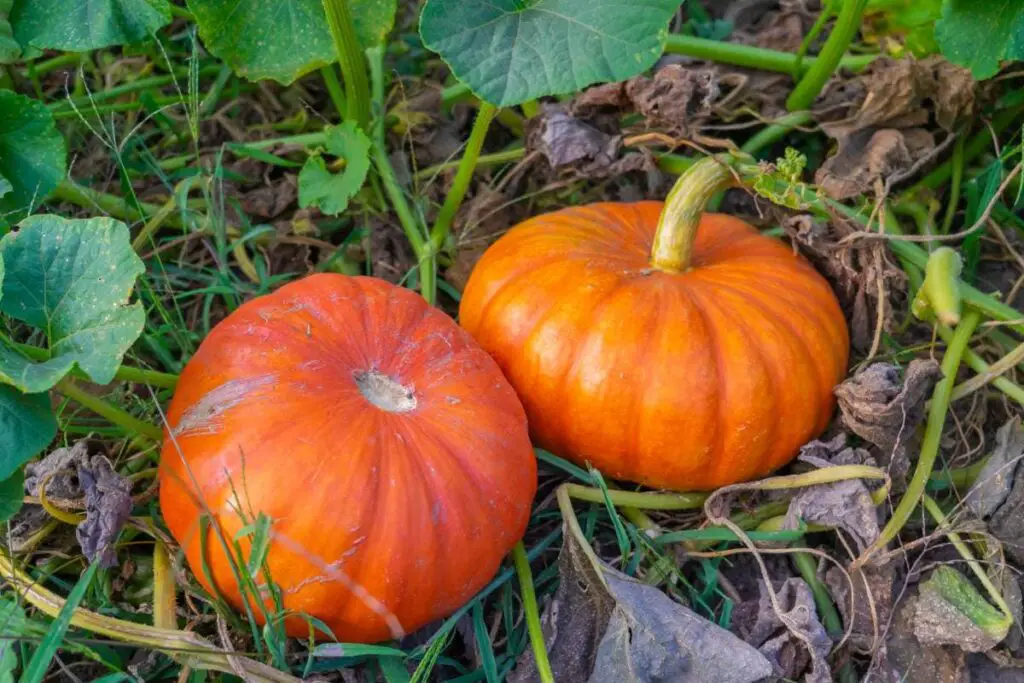
Proper Fertilization
Proper regulation of soil moisture can also help ensure that your plant receives essential nutrients from the soil or fertilizer.
Pumpkins need low amounts of calcium. You can supplement the calcium requirement by diluting a tablespoon of calcium nitrate in 1 gallon (3.8 l) of water. Watering your pumpkin with this solution at the beginning of the growing season should be enough.
You can also apply liquid chelated calcium at fruit set to ensure the fruits develop properly. Depending on the product you use, follow the dosage and application instructions carefully.
Plant Rotation
If your pumpkins show signs of pumpkin-specific pests and diseases, it’s best to avoid growing another batch of pumpkins in the same spot for the next 2-3 years. Choose a bright spot in your garden with well-draining soil for the new pumpkins next season.
While waiting, you can also sterilize or solarize the soil in the old spot to ensure that your new crops won’t have the same issues.
Identifying Edible vs. Inedible Sticky Pumpkins
Many parts of the pumpkin can be affected and become sticky, including the stem, the rind, and the flesh. Depending on the severity of the damage, your harvest might all go to waste.
Your pumpkin is still edible if the stickiness is limited to the surface of the rind, as in the case of honeydew and slug slime. If the rind is hard and there are no signs of rot, but the flesh is sticky due to overmaturity or ripeness, the fruit can also be safely used for some fall recipes.
On the other hand, here are some signs that your sticky pumpkins are inedible:
Fruit Rot or Molds
Stickiness due to fruit rot is a sign of infection, making the fruit inedible. As discussed, a pumpkin with fruit rot can be infected with several pathogens. Although some fruit sections might appear okay, they could still harbor some pathogens.
Mold can appear as green, white, or black discoloration on the rind and some parts of the flesh. The rest of the fruit might look fine but they likely contain the fungi causing the mold. They just haven’t grown enough to produce mycelia that give the mold its fuzzy appearance.
Bad or Rotten Smell
A bad or rotten smell is a clear sign that you must steer clear of the pumpkin. It proves that bacteria, viruses, or fungi are in the process of decomposing the fruit. Rotten fruits can invite other pathogens from your home that can cause food poisoning when consumed.
Presence of Insect Pests
If there are insect pests inside the pumpkin and some parts of the flesh appear sticky, it’s a sign that there are larvae or maggots lurking within. Several insects can carry various types of diseases, so it’s best to avoid eating these pumpkins.
Using Sticky Pumpkins
Slice the pumpkin and inspect the flesh. If your pumpkin has become sticky due to being overripe, you can still use some healthy parts.
Seeds
Scoop out the seeds, wash them, and rinse with clean water. You can air-dry the seeds and store them for planting later. Alternatively, you can roast or salt them to enjoy as a snack.
Flesh
If part of the flesh has become soft, you can scoop it out and dispose of it. You can then roast the remaining hard flesh. It will become softer after roasting so you can use it to make pumpkin puree.
Once the puree is ready, you can use it for multiple pumpkin-flavored recipes, including the following:
- Cheesecake
- Pie
- Latte
- Risotto
- Biscuits
- Brownies
- Pancakes
- Bread
Rind
Even if part of the flesh has become sticky or soft, as long as the rind is hard, you can still use it for carving. Just scrape off the tender flesh until all that remains are the hard flesh and rind. You can then carve the pumpkin as you like.

Final Thoughts
Stickiness in pumpkins can be a minor issue caused by honeydew or slime on the fruit’s surface. It can also be due to overmaturity that can soften the flesh. Thankfully, pumpkins with these issues are still safe for consumption, seed propagation, and carving.
However, sticky flesh due to fruit rot can be caused by pests or microbial diseases, making your harvest inedible. In this case, you must dispose of the infected plants and fruits.
Harvesting the fruits at the right time and avoiding growing pumpkins in the same spot for the next 2-3 years is the best way to prevent the same issue. Also, ensure you improve the humidity, moisture, and temperature levels to prevent pests and diseases.

